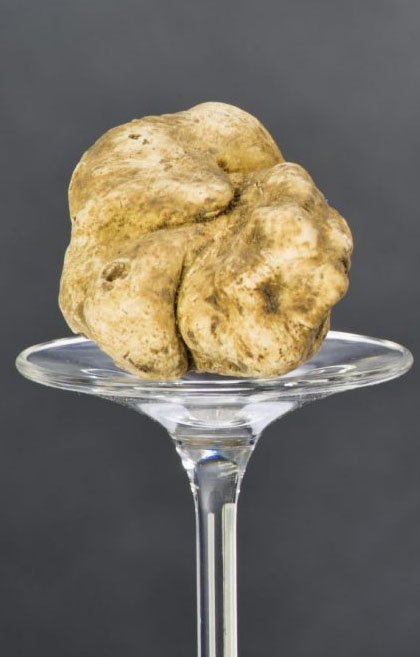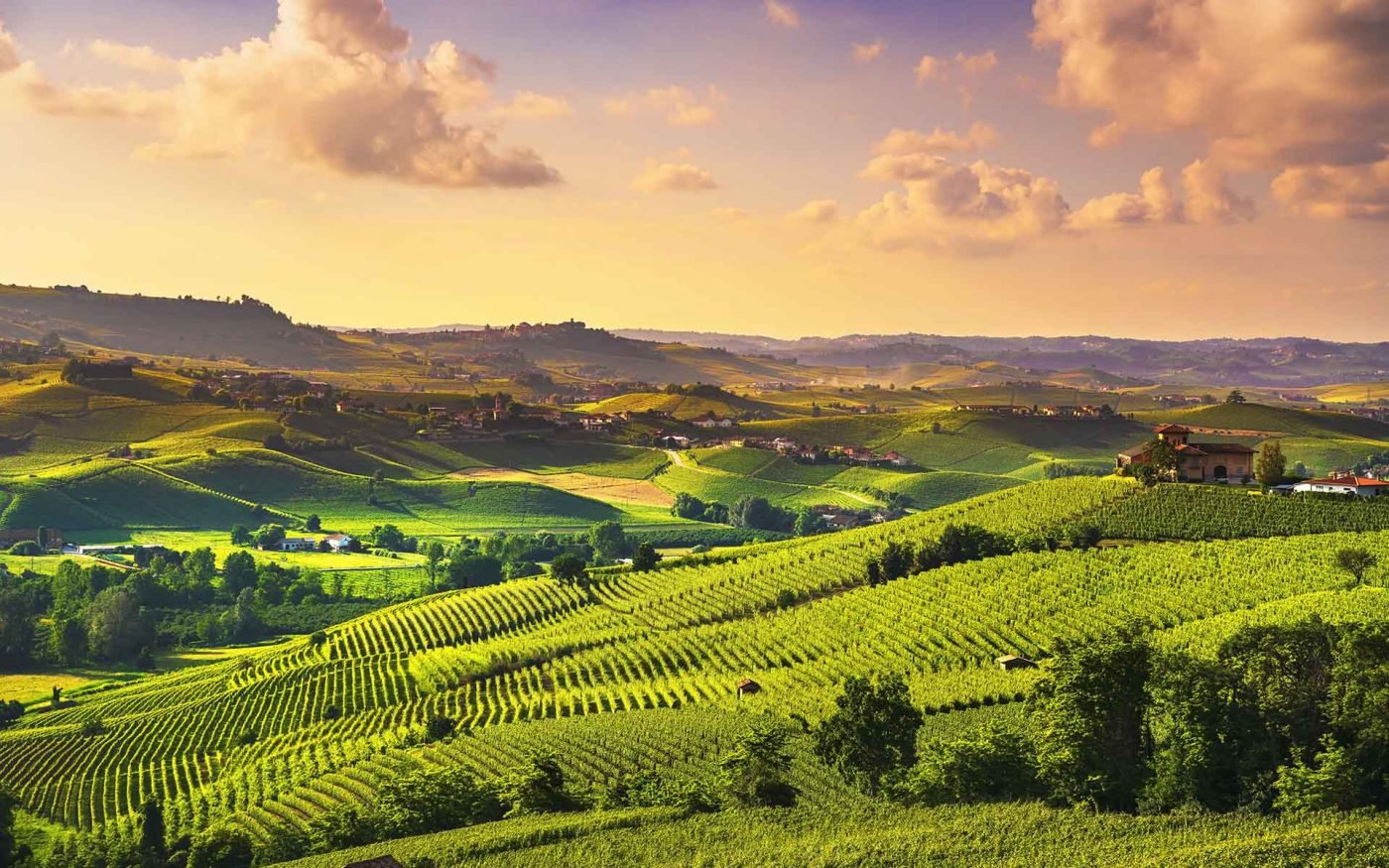Italy > Piedmont
Langhe in Autumn- courtesy thenewgastronome.com
Piedmont & The Langhe
The Piedmont is Italy’s greatest concentration of superb vineyards. A hilly region of wrinkles and ridges piling up towards the Alps, only 5% of the vineyard areas is classified as flat.
The area has been known for its vines for thousands of years: vine pollen has been found in sediments dating to the 5th century BC, and the local dialect contains many Celtic and Etruscan words related to wine and the vine. Pliny the Elder (first century AD) mentions the region as making superb wines, and by the middle ages, the penalty for cutting down a Nebbiolo vine could be losing your right hand or even death!
The Langhe
Nestled within the southeastern quadrant of Italy’s Piedmont, southeast of the Po River and straddling the Tanaro River, is the vineyard landscape of Langhe-Roero & Monferrato; named a UNESCO World Heritage site in 2014. The region is composed of five wine districts- Langhe itself including the Barolo DOCG; the Hills of Barbaresco and adjacent Nieve home to the Barbaresco DOCG; Nizza Monferrato & Barbera, known for its Barbera d’Asti; Canelli & Asti Spumanti, famed of course for their Muscat-based wines; and Monferrato degli Infernot to the north, a region of hilltop vineyards honeycombed underneath by the ancient Pietra da Cantoni sandstone quarries and mines. The entire Piedmont is famed for its truffles, hazelnuts, mushrooms, cheeses, risotto… and its sublime wines, from dry whites made from Cortese and Arneis, through the area’s famed sweet Moscato, to bright reds of Dolcetto, solid Barbera wines, Langhe Rosso blends and of course the sublime Nebbiolos of Barolo and Barbaresco.
Tartufo Bianco… mmmmmmmm
A region of warm days and cool nights, morning mists and a long growing season, this is one of Italy’s best terroirs for wine. The soils are largely limestone based, with clayey, sandy and gravel alluvial deposits in the valleys. Elevations run from 1500 to 2500ft.
Nebbiolo: courtesy Eleanor Wine Academy
Our Producers:
Bonfante & Chiarle (Monferrato)
Tenuta Carretta (Roero & Langhe)
Seiterre (Monferrato)
piedmont: the varieties
The Piedmont is famed for both red and white wines made from a range of indigenous grapes. Wines are made at both the DOC and DOCG levels, there are no IGT designations in the Piedmont.
The principal grape varieties are as follow:
Arneis: Though Arneis has been grown in the Roero since the 15th century, it has only recently developed a reputation for being one of Piedmont’s finest dry white wines. This is the direct result of modern Roero winemakers devoting themselves to cultivating this fussy, low-yield grape, which is known as the little rascal in local dialect. Arneis from the sandy, calcareous, clay soils of the Roero tend to be fruity, floral, and herbaceous with low acidity while the Langhe Arneis run crisper and tighter.
Cortese: Cortese grapes are cultivated in the lime-rich, marl soils around the area of Gavi. Gavi is Piedmont’s most prominent still white wine. Fruity and floral with notes of apple, peach, lemon, and white flowers, this wine also boasts steely acidity and solid minerality.
Moscato: This fragrant, floral, and sweet-scented grape has been a mainstay in Piedmont for hundreds of years. Today, there are 9,700 hectares of Moscato planted in the provinces of Alessandria, Asti, and Cuneo, making it the Piedmont’s most widely planted white grape. Styles range from lightly petillant through fully sparkling Spumante. Moscato is almost always vinified with significant residual sweetness and relatively low alcohol.
Dolcetto: Of the three main red grapes in Piedmont, Dolcetto ripens the earliest. It makes wines that are deep purple in color and low in acid. Dolcetto has formidable tannins, but winemakers tame them with a shorter fermentation. Dolcettos are easy-drinking wines with black fruit flavors and notes of violet, licorice, and almond.
Barbera: This grape is planted throughout much of the Piedmont. Known for its high levels of acidity, red fruit character, deep ruby color, and relatively low tannins and alcohol, Barbera yields a broad range of styles, from bright and quite rustic, to rich and silky.
Nebbiolo: This is a finicky variety that needs particular conditions to thrive. It tends to bud early but ripens late, even on the sunniest south-facing slopes. It yields wine with aromatic complexity and exceptional aging potential, especially in Barolo and Barbaresco. Barolo wines are regarded by many as Italy’s finest. They’re high in acid, alcohol, and tannins, and typically aged for long periods in oak casks or barriques. They also benefit from extended aging in bottle. Dominant flavors include red and black fruit, violet, rose, mushroom, tar, leather, and spice. The grape tends to show its best expressions on the limestone-based soils of the Langhe.
“The vineyards of Langhe-Roero and Monferrato constitute an outstanding example of man’s interaction with his natural environment. Following a long and slow evolution of winegrowing expertise, the best possible adaptation of grape varieties to land with specific soil and climatic components has been carried out, which in itself is related to winemaking expertise, thereby becoming an international benchmark. ”
Barolo Vineyards, courtesy Langhe.net




